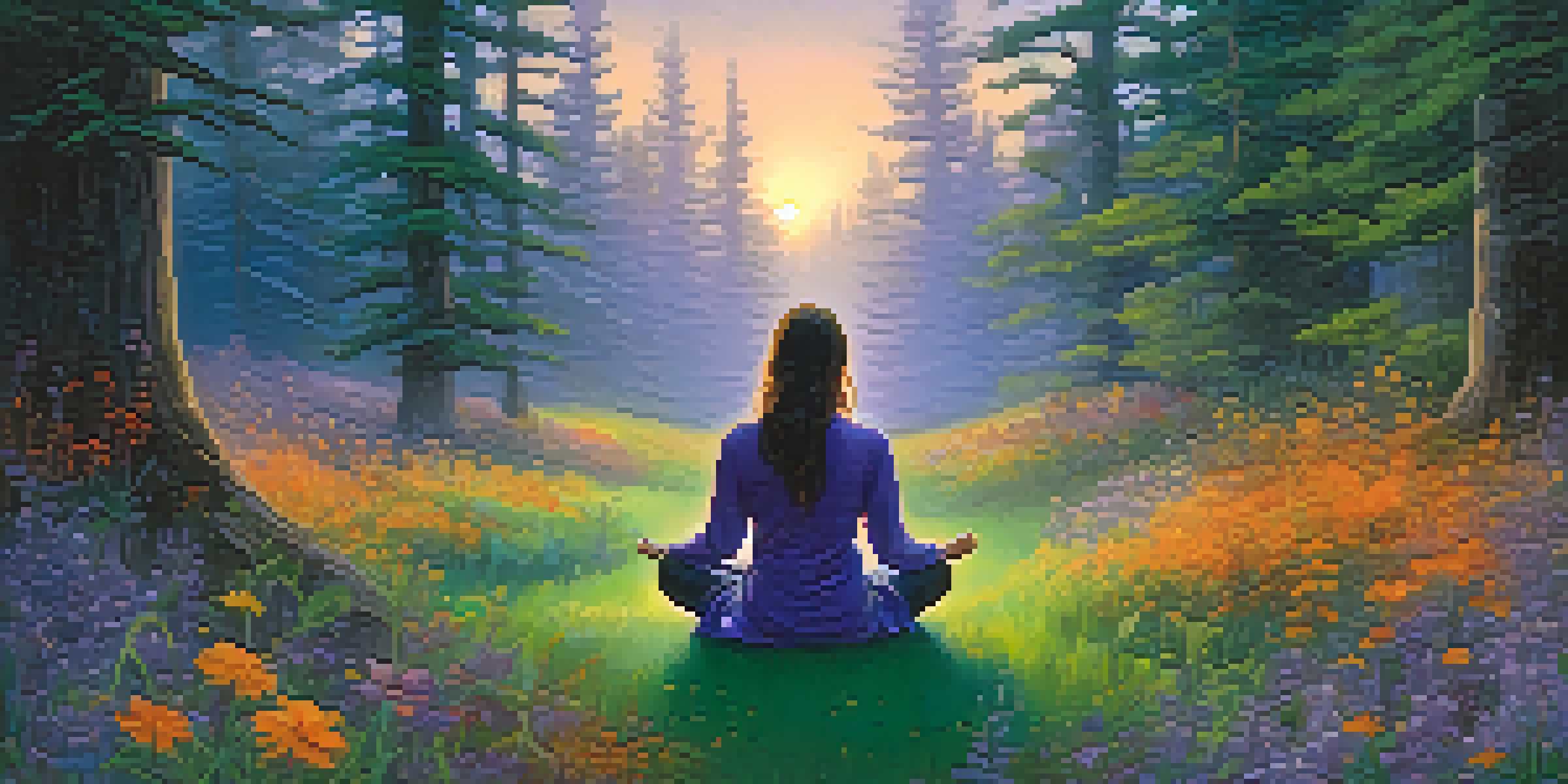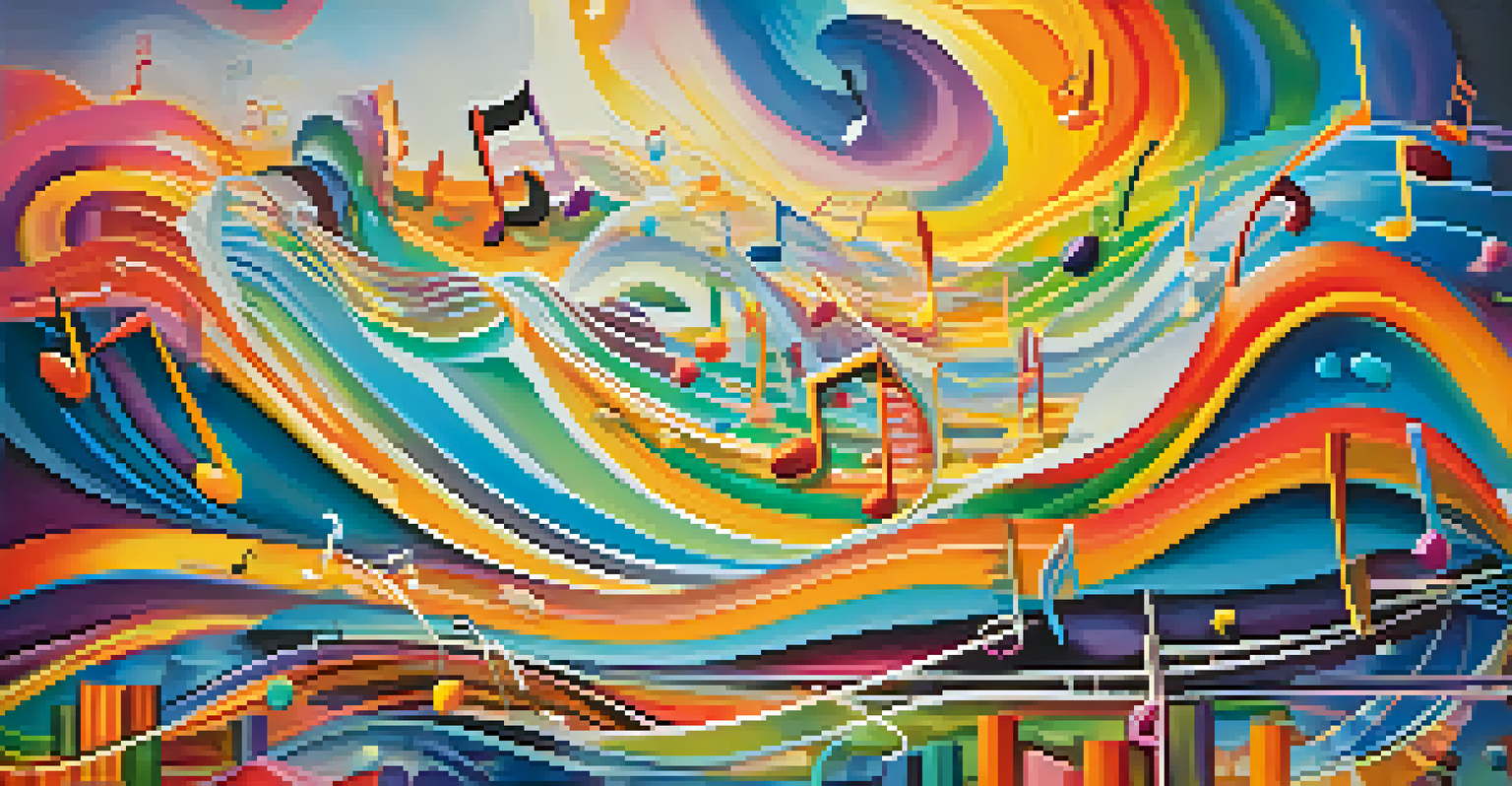Rhythms of the Mind: Music and Entheogenic Journeys

Understanding Entheogens: A Brief Overview
Entheogens are substances that can induce altered states of consciousness, often used in spiritual or healing practices. They come from various sources, including plants and fungi, and have been utilized by cultures worldwide for centuries. By facilitating profound experiences, these substances can lead individuals to introspection and connection with deeper aspects of themselves.
The power of music makes all the difference in the world.
The use of entheogens often intersects with rituals and music, creating a holistic experience that can enhance the journey. Music serves as a guiding force, influencing the emotional landscape of the experience. This relationship raises intriguing questions about the nature of consciousness and the role of sensory inputs in shaping our perceptions.
Understanding entheogens requires a nuanced approach, as their effects can vary widely depending on dosage, setting, and individual intent. When combined with music, these substances can unlock new dimensions of thought and feeling, leading to transformative experiences. This interplay between sound and substance is a key aspect of many spiritual traditions.
The Power of Music in Altered States
Music has an incredible ability to evoke emotions, making it a powerful tool during altered states of consciousness. When combined with entheogenic experiences, music can amplify feelings of euphoria, introspection, and even catharsis. This phenomenon can be likened to a wave, where the sound becomes a vessel carrying the listener through their emotional and spiritual exploration.

Certain types of music, such as ambient or tribal rhythms, are often preferred during these journeys. The repetitive patterns and soothing melodies can create a sense of safety and allow individuals to surrender to their experience. Just as a soundtrack enhances a movie, music can elevate the overall journey, providing both comfort and stimulation.
Entheogens Enhance Spiritual Journeys
Entheogens, often used in spiritual practices, facilitate profound experiences that promote introspection and connection to deeper self.
Moreover, the cultural context of music plays a significant role in shaping the experience. For instance, indigenous music used in traditional ceremonies can evoke a sense of belonging and connection to ancestral roots. This blending of sound and spirituality enriches the entheogenic experience, creating a tapestry of sensations that resonate deeply.
Creating the Ideal Soundscape
Crafting the right soundscape for an entheogenic journey is essential for maximizing its potential. This involves selecting music that aligns with the intended emotional and spiritual goals of the experience. Just as a chef carefully chooses ingredients for a dish, the right playlist can enhance the overall flavor of a psychedelic journey.
Music can change the world because it can change people.
In practice, many individuals or guides curate playlists specifically for these experiences, often including a mix of genres and tempos. Slow, meditative tracks can guide participants into deeper states, while uplifting melodies can elevate moods during euphoric peaks. This intentional selection is key to creating a supportive environment for exploration.
Additionally, live music can add a unique dimension to the journey, as musicians can adapt their performance to the energy of the group. This real-time interaction fosters a shared sense of community among participants, enhancing the overall experience. The synergy between live sound and the collective energy can lead to profound moments of connection and insight.
Music as a Tool for Integration
Post-experience integration is crucial for fully understanding and incorporating insights gained during an entheogenic journey. Music can play a vital role in this process, helping individuals process emotions and thoughts that may arise. Just as a journal serves as a reflective tool, music can provide a soundtrack for integrating experiences into daily life.
Listening to specific tracks that were present during the journey can evoke memories and emotions linked to those moments. This can be a powerful way to reconnect with insights and reinforce personal growth. Often, individuals find that certain songs take on new meanings after their experiences, becoming symbols of transformation.
Music Amplifies Emotional Experiences
The combination of music and entheogens can significantly enhance feelings of euphoria and introspection, creating a holistic journey.
Furthermore, sharing music with others who have had similar journeys can foster deep connections and discussions. Group listening sessions can create a safe space for reflection and storytelling, leading to greater understanding and healing. This communal aspect of music integration underscores its significance in the entheogenic journey.
Cultural Perspectives on Music and Psychedelics
Throughout history, various cultures have recognized the intertwined relationship between music and psychedelics. From the ancient use of Ayahuasca in the Amazon, where shamans sing icaros, to the modern rave scene with its pulsating beats, music has always been an essential element. These practices highlight the universality of music in facilitating transcendental experiences.
In many indigenous traditions, music is considered a sacred tool that guides participants through their journeys. The careful selection of songs and chants reflects a deep understanding of how sound influences consciousness. This cultural wisdom emphasizes the importance of respecting and preserving these practices, which have been refined over generations.
As contemporary society explores these ancient traditions, there is an opportunity to bridge the gap between cultures. This cross-pollination can lead to innovative approaches to music and entheogenic experiences, creating new rituals that honor both tradition and modernity. By valuing cultural perspectives, we can enrich our understanding of the profound impact of music in these journeys.
The Science Behind Music and Psychedelics
Recent scientific research has begun to unveil the intricate relationship between music and psychedelics. Studies show that music can significantly enhance the emotional and cognitive effects of substances like psilocybin or LSD. This connection sheds light on why many individuals report heightened feelings of connection and insight when music accompanies their experiences.
Neuroscientific studies indicate that music activates brain regions associated with emotion, memory, and pleasure. When combined with psychedelics, these effects can be magnified, leading to profound experiences of unity and transcendence. This interplay between sound and substance suggests a deeper understanding of how our brains process and integrate experiences.
Integration is Key Post-Experience
Music plays a vital role in integrating insights gained during entheogenic journeys, helping individuals process emotions and foster connections.
Furthermore, understanding this science can help guide therapeutic practices involving psychedelics. As researchers explore the potential of music in therapeutic settings, it becomes clear that creating the right auditory environment can enhance healing and personal growth. This emerging field bridges the gap between science, psychology, and spirituality, offering new insights into human consciousness.
Navigating the Future of Music and Entheogens
As interest in psychedelics and their therapeutic potential grows, the role of music in these experiences will likely continue to evolve. The future may see more integration of music therapy with psychedelic-assisted treatments, creating a holistic approach to healing. This development holds great promise for those seeking to explore the depths of their consciousness.
Moreover, as more people share their experiences, there is potential for a greater understanding of how music influences these journeys. Communities are forming around shared interests in music and psychedelics, fostering collaboration and creativity. This cultural shift may lead to new genres and styles specifically designed for entheogenic experiences.

Ultimately, the future of music and entheogens is bright, offering opportunities for exploration and healing. By valuing both traditional practices and modern innovations, we can create a rich tapestry of experiences that honor the profound connections between sound, consciousness, and the human spirit. The dance between music and entheogens is one that invites us all to join in.